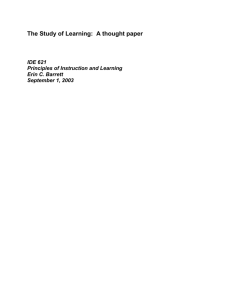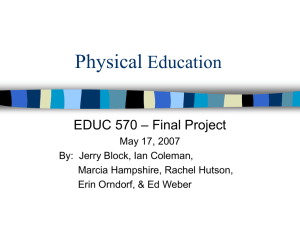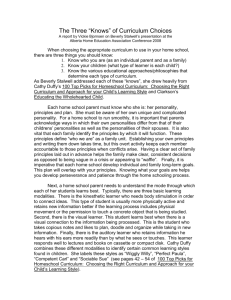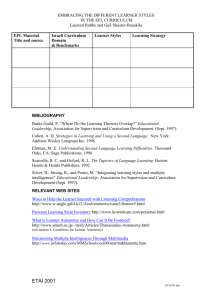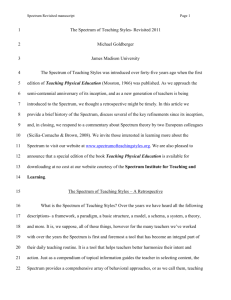Teaching Philosophy
advertisement
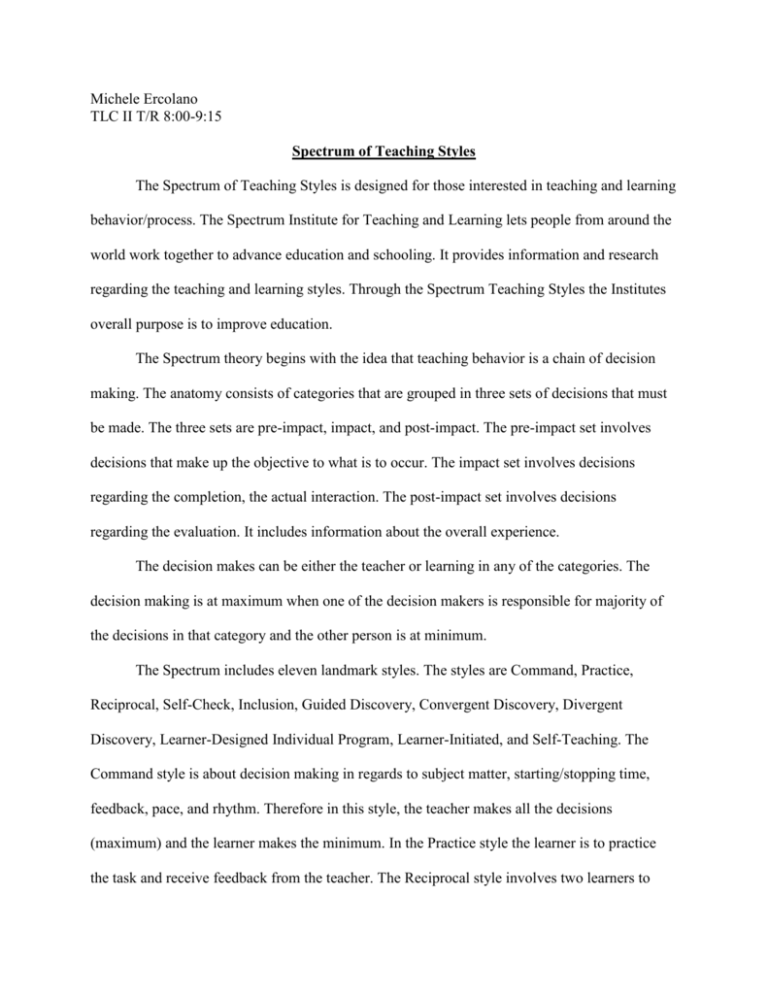
Michele Ercolano TLC II T/R 8:00-9:15 Spectrum of Teaching Styles The Spectrum of Teaching Styles is designed for those interested in teaching and learning behavior/process. The Spectrum Institute for Teaching and Learning lets people from around the world work together to advance education and schooling. It provides information and research regarding the teaching and learning styles. Through the Spectrum Teaching Styles the Institutes overall purpose is to improve education. The Spectrum theory begins with the idea that teaching behavior is a chain of decision making. The anatomy consists of categories that are grouped in three sets of decisions that must be made. The three sets are pre-impact, impact, and post-impact. The pre-impact set involves decisions that make up the objective to what is to occur. The impact set involves decisions regarding the completion, the actual interaction. The post-impact set involves decisions regarding the evaluation. It includes information about the overall experience. The decision makes can be either the teacher or learning in any of the categories. The decision making is at maximum when one of the decision makers is responsible for majority of the decisions in that category and the other person is at minimum. The Spectrum includes eleven landmark styles. The styles are Command, Practice, Reciprocal, Self-Check, Inclusion, Guided Discovery, Convergent Discovery, Divergent Discovery, Learner-Designed Individual Program, Learner-Initiated, and Self-Teaching. The Command style is about decision making in regards to subject matter, starting/stopping time, feedback, pace, and rhythm. Therefore in this style, the teacher makes all the decisions (maximum) and the learner makes the minimum. In the Practice style the learner is to practice the task and receive feedback from the teacher. The Reciprocal style involves two learners to work together. Both learners perform both tasks. One learner is performing the task, the doer, while the other learner is providing feedback, the observer. Here, the teacher provides feedback and makes decisions on subject matter, criteria, and logistics. During Self-Check, the learner works independently and evaluates themselves. The teacher again makes subject matter, criteria, and logistical decisions. In Inclusion style, learners pick a task at an appropriate entry point based on difficulty in which they feel is best for them. They practice the task and make adjustments if needed. The teacher makes subject matter and logistical decisions. In Guided Discovery, the learner is to find the answer which involves making specific connections and decisions regarding sections within the topic. The teacher creates the questions and makes subject matter decisions. In Convergent Discovery, the learner is provided with a stimulus and must answer the question through trial and error, specific patterns, or the production of new cognitive links through known knowledge. The teach is responsible for creating the question given to the learner, the target concept being discovered, and subject matter decisions. In Divergent Discovery, the learner is to come up with numerous solutions to a question. The teacher provides the question and logistics to the learner. The clusters include two basic thinking capacities, the capacity for reproduction and the capacity for production. Human beings have the capacity to do both. Capacity for reproduction involves the ability to recall known and past information/knowledge. This capacity includes the first five styles, Command, Practice, Reciprocal, Self-Check, and Inclusion. Capacity of production involves the ability to produce new information and ideas. This capacity includes the remaining six styles. The Developmental effects include physical, social, emotional, cognitive, and moral/ethic developmental objectives.




